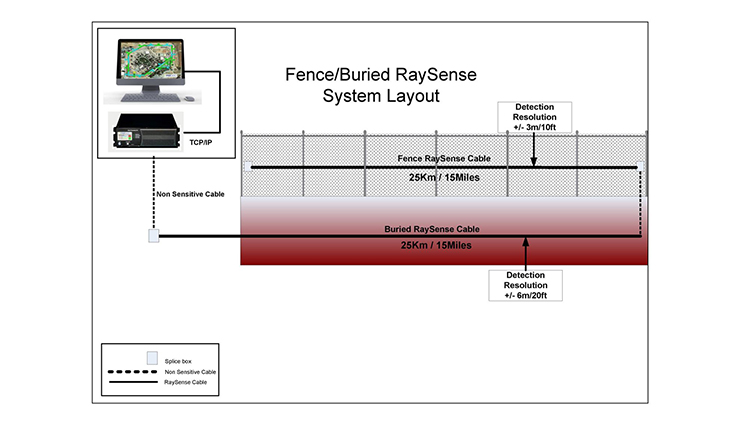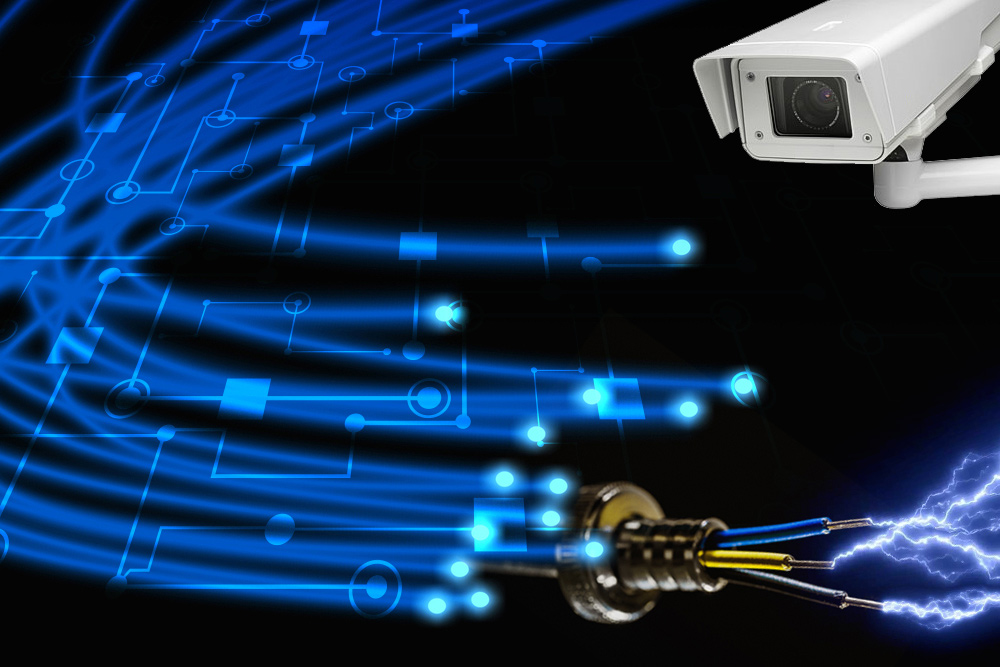How Fiber Security Helps Prevent Unauthorized Access and Boosts Monitoring
Wiki Article
Boost Your Safety With Advanced Fiber Optic Protection Systems
In an age where security is vital, innovative fiber optic safety and security systems offer a compelling service for boosting safety across different settings. These systems not only boast premium bandwidth and speed for high-resolution security yet also use impressive resilience against outside disturbances. As companies increasingly seek trustworthy means to protect their possessions, the combination of cutting-edge modern technologies like AI and IoT within fiber optic frameworks raises vital concerns concerning their performance contrasted to traditional systems. What implications do these developments hold for future security measures?Benefits of Fiber Optic Security
Utilizing the advantages of fiber optic innovation significantly boosts safety and security systems throughout various applications. One of the key benefits is the enhanced data transfer capacity, permitting the transmission of huge quantities of information at high rates. This is especially important for real-time video clip surveillance, where high-resolution feeds can be sent out without latency, making certain prompt action abilities.Additionally, optical fiber display exceptional resistance to electromagnetic disturbance, which is crucial in environments with possible signal interruptions. This reliability ensures regular performance in critical protection operations. Fiber optic wires are less vulnerable to tapping and unapproved access contrasted to traditional copper electrical wiring, thereby improving information integrity and discretion.
Another significant benefit is the toughness of fiber optic systems; they are more resistant to ecological factors such as wetness, temperature level fluctuations, and destructive materials. This resilience equates to decrease maintenance expenses and longer life expectancies for security installations.
Finally, the light-weight nature of fiber optic cables helps with less complicated installation and routing, especially in complicated frameworks (fiber optic security system). Ultimately, the integration of fiber optic innovation right into protection systems not just bolsters protection steps however additionally maximizes functional performance
Key Features to Consider
When assessing fiber optic safety systems, a number of crucial attributes should be considered to guarantee optimal efficiency and performance. Initially, assess the system's detection range and sensitivity; a considerable range enables checking large locations, while high level of sensitivity makes sure that also small disruptions are identified immediately.Following, think about the integration capacities of the system. A fiber optic protection system must perfectly interface with existing protection procedures such as video cameras and alarms, developing a cohesive security network.
Longevity and environmental resistance are also essential functions. Ensure that the system is made to stand up to harsh climate condition and possible physical risks, as this will certainly extend its functional life expectancy.

Lastly, check into the scalability of the system. A robust fiber optic security system must be easily expanding to fit future demands without considerable overhauls. By carefully taking into consideration these functions, you can pick a fiber optic safety solution that improves safety and safety in your environment.
Installment Process Introduction
To successfully carry out a fiber optic security system, a methodical installation process is essential. This process starts with a comprehensive website analysis to identify the details safety and security requirements and to recognize ideal areas for fiber optic cables and safety and security tools. Following this assessment, the setup group you can try here will certainly develop a comprehensive strategy, consisting of cable pathways, essential tools, and conformity with local guidelines.Following, the installation involves laying the fiber optic cords, guaranteeing they are protected from environmental elements and physical damages. Correct handling strategies are crucial, as fiber optic cable televisions are delicate and can be conveniently damaged. After the cabling is set up, ports and discontinuations are diligently finished to ensure signal integrity.
The succeeding stage consists of installing security tools such as electronic cameras, movement detectors, and alarm systems, all incorporated with the fiber optic network. Strenuous testing is conducted to validate that all elements are functioning appropriately and to make sure ideal efficiency.

Contrasting Fiber Optic to Typical Equipments
The advancement of safety innovation has led to significant innovations in the contrast between fiber optic systems and conventional copper-based systems. Fiber optic systems utilize light to send information, providing superior bandwidth and rate compared to their copper counterparts. This causes improved data transmission capacities, making try this web-site optical fiber optimal home for high-resolution video security and real-time tracking.Additionally, fiber optic wires are resistant to electromagnetic disturbance, decreasing the chance of signal deterioration caused by exterior elements. This characteristic makes sure consistent efficiency, even in tough atmospheres. On the other hand, standard copper systems are more prone to interference, causing potential susceptabilities in security applications.
Longevity is one more benefit of fiber optic systems. They are less susceptible to harm from environmental variables such as moisture and temperature level variations, which can jeopardize copper circuitry. Fiber optics are lighter and thinner, permitting for easier setup and lowered physical footprint.
Nevertheless, standard systems often tend to have lower preliminary prices, making them attractive for budget-conscious projects. While fiber optic systems may need a higher upfront investment, their lasting advantages-- such as lower maintenance costs and greater dependability-- usually exceed the preliminary expenditure, placing them as a superior choice for contemporary safety demands.
Future Fads in Security Technology
Emerging trends in safety and security innovation are poised to transform the landscape of monitoring and hazard detection - fiber optic security system. As organizations progressively deal with advanced risks, advancements such as expert system (AI) and maker discovering (ML) are ending up being important to safety systems. These innovations improve the ability of fiber optic systems by enabling real-time data evaluation, recognizing abnormalities, and automating reactions to potential breachesIn addition, the assimilation of the Web of Things (IoT) is revolutionizing security structures. IoT gadgets can offer comprehensive situational awareness and promote smooth communication in between various safety and security components. This interconnectedness permits for a lot more efficient surveillance and faster occurrence reaction times.
Biometric authentication is additionally acquiring momentum, supplying a higher degree of safety through one-of-a-kind physical attributes. As this technology advances, it is likely to be included right into fiber optic systems for enhanced accessibility control.
Final Thought
Finally, progressed fiber optic security systems stand for a significant innovation in safety and security technology. Their premium bandwidth, resistance to disturbance, and resilience promote reputable surveillance and data stability. As these systems integrate AI and IoT abilities, they boost the overall safety structure, guaranteeing durable protection for possessions. The change from conventional systems to fiber optic options reflects a growing pattern in the direction of more reliable and reliable security procedures in a significantly complex technological landscape.Report this wiki page